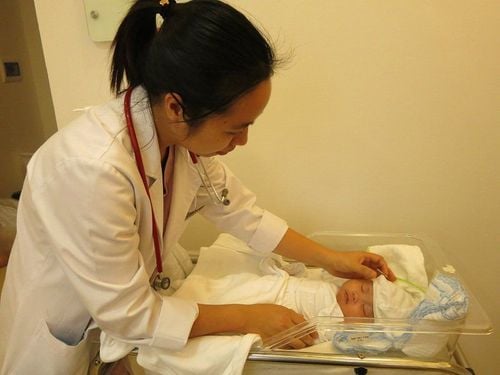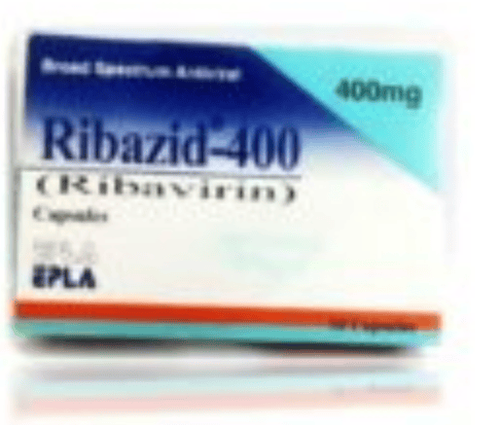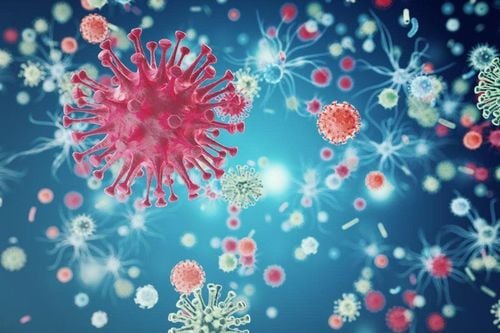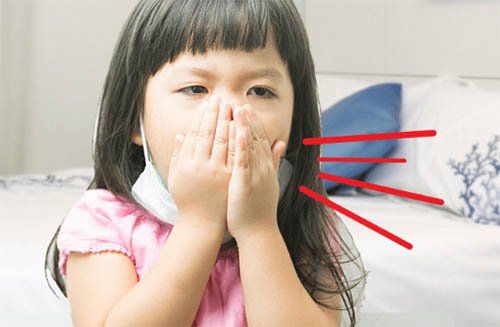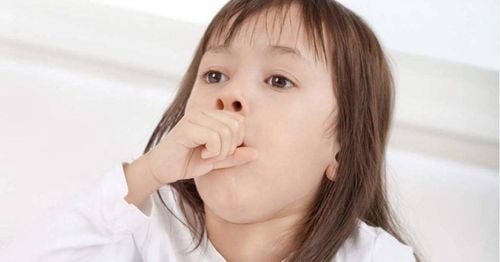This is an automatically translated article.
The article was professionally consulted by Doctor of Pediatrics - Neonatology - Vinmec Nha Trang International General Hospital.RSV virus - respiratory syncytial virus is one of the common causes of respiratory diseases in infants and young children with the ability to spread very strongly. There is currently no vaccine to protect children from this virus. Synthetic virus infection is the leading cause of bronchiolitis and pneumonia in children under two years of age, and it is very dangerous for children. This disease can occur all year round, but usually in the rainy season in the southern provinces or the cold season in the northern provinces.
1. What is RSV?
RSV stands for respiratory syncytial virus (RSV). This respiratory virus usually causes mild, cold-like symptoms in older children and adults, but it can lead to more serious problems in infants and young children.RSV is the most common cause of lower respiratory tract infections in children under 1 year of age. Most children have at least one RSV infection before age 2.
2. Time characteristics of respiratory illness in children by RSV . virus
RSV outbreaks are most common from October or November to April or May, with a peak in January and February. Children (and adults) can be infected with the RSV virus multiple times in a single day. season. However, repeat infections are usually less severe than the first infection.3. The spread of the RSV . virus
RSV virus spreads easily through airborne droplets or by contact with contaminated surfaces. A child can get RSV when an infected person sneezes or coughs nearby, or by touching a contaminated surface, like a toy, and then putting a finger in or near their mouth, nose, or eyes. me.The virus can live on hard surfaces such as doorknobs, countertops and toys for up to six hours, and on soft surfaces like hands or tissues - for 30 minutes or more.
People with RSV can usually infect others for three to eight days.
4. Symptoms of RSV in Children
Mild RSV symptoms are similar to those of children with upper respiratory tract infections, the common cold. These include:Runny nose Cough Fever Nasal congestion Sneezing Poor appetite Irritability and restlessness
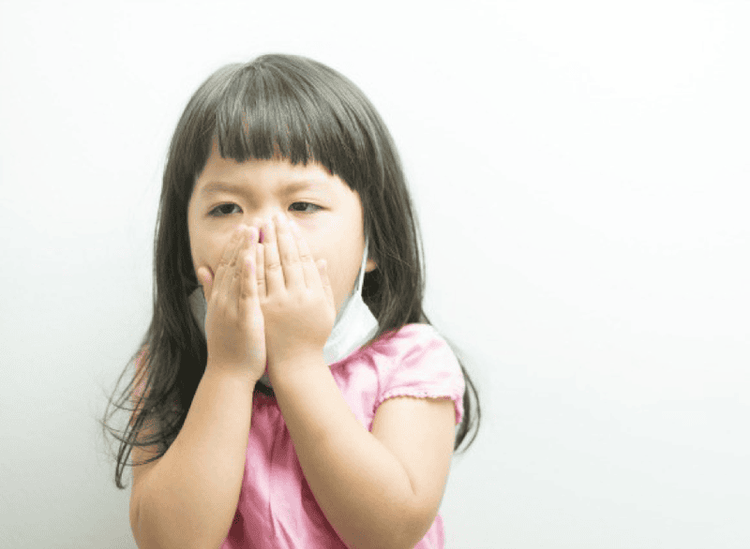
Trẻ nhiễm virus RSV có những triệu chứng như sổ mũi, ho, sốt,...
5. RSV can become a more serious disease
In children, RSV is the most common cause of bronchiolitis and pneumonia. At least a quarter of children have signs of bronchiolitis or pneumonia when they first get RSV.Bronchiolitis causes the small airways in the lungs to swell and fill with mucus, restricting air circulation. Pneumonia is an infection in one or both lungs. Symptoms of bronchiolitis and pneumonia include:
Wheezing Rapid breathing Difficulty breathing (hitting nostrils, grunting, head bobbing, or jerking between ribs or lower neck area when breathing) Lips and bluish or gray fingernails (due to decreased oxygen in the blood) Fever Call a doctor for help and treatment. Call the doctor if your child has cold-like symptoms and:
Has any symptoms of bronchiolitis or pneumonia Under 3 months of age Premature birth and younger than 2 years Children 3 months to 6 years month old and have a fever of 38°C or higher Over 6 months and have a temperature of 39°C or higher Have lung or heart problems Have a weakened immune system Also seek medical attention immediately if a child of any age has RSV symptoms and signs of dehydration. Signs of dehydration include:
Dark, strong-smelling urine More than six hours without urinating Coma A dry mouth and lips No tears when crying Sunken eyes Hands and feet feel cold and look cold Dryness Dizziness or lightheadedness Excessive sleepiness or irritability
6. Are children at high risk for more serious RSV infections?
Although most children recover from RSV without any complications, at-risk groups often develop more severe infections, which may require hospital treatment. The most at-risk groups of children include:Premature babies Infants and young children 6 months and younger Children under 2 years of age with congenital heart defects or chronic lung disease Children with weakened immune systems Children with neuromuscular disorders (especially those with difficulty swallowing or mucus secretion)
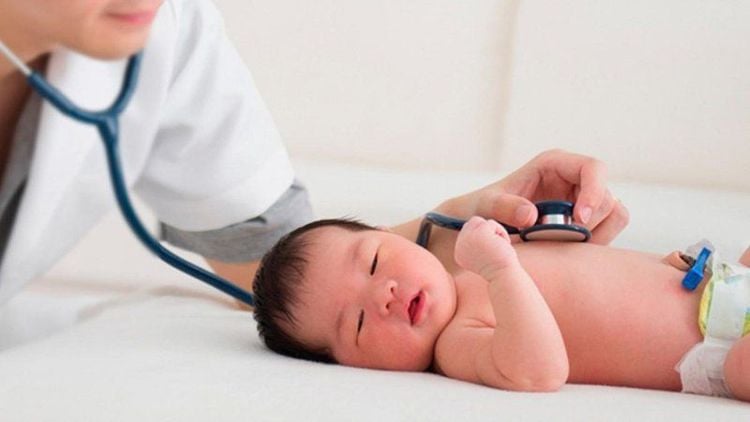
Trẻ sinh non nhiễm virus RSV thường có nguy cơ nhiễm trùng nặng hơn
7. Diagnosis of RSV . virus disease
During an office visit, your doctor can diagnose RSV using a rapid RSV test, which can give results in about 10 minutes. (This test is done by aspirating or swabbing your child's throat.)The doctor will also do a physical exam and may use a pulse oximeter to check the child's blood oxygen level. With a sensor attached to the finger or toe, the doctor can easily get results of the blood oxygen level to ensure that the baby is getting enough oxygen.
To check for pulmonary obstruction, your doctor may order a chest X-ray, although this is not usually necessary.
Newborns who are at least 3 months of age and older who are healthy do not need to see a doctor just to get a definitive diagnosis of RSV.
8. Treatment of diseases caused by RSV . virus
Like the common cold, there is no cure for RSV. Mild symptoms may go away on their own after a week or two. The cough may persist. Symptoms are usually worst on the third to fifth day.If the child develops pneumonia or bronchiolitis superinfection, the child may be prescribed antibiotics to treat the bacterial infection. (Antibiotics will not treat RSV on its own because it is a virus.)
An estimated 1 to 3 percent of children with RSV need to stay in the hospital to receive oxygen and fluids. through a vein. Most are under 6 months. But in most cases, the child only stays in the hospital for a few days and usually makes a full recovery within two weeks.
9. Some measures to help children feel more comfortable when sick with RSV
Give your child plenty of water to drink to keep them hydrated. If you're breastfeeding, breastfeed often, even more often than usual. Use saline nasal drops. Put a few drops in your nose to loosen the mucus, then use a bulb syringe or nasal aspirator to gently suck it out. Use a cool mist vaporizer to moisten your baby's airways, making it easier for them to breathe. Follow the manufacturer's instructions to keep the vaporizer clean as it can spread germs through the air if dirty. Keep children away from irritating fumes, such as cigarette smoke, new paint fumes, and wood smoke, which can make breathing more difficult. Exposure to secondhand smoke puts children at higher risk for severe RSV or another respiratory virus. Children can be given age-appropriate doses of acetaminophen or ibuprofen. If your baby is less than 3 months old, ask your doctor if it's okay to give your baby acetaminophen to ease discomfort. When your baby is 3 months old, you can give your child the appropriate dose of children's acetaminophen. When your baby is at least 6 months old, you can give your child the appropriate dose of children's acetaminophen or ibuprofen. Don't give your child over-the-counter cold medicine unless your doctor tells you to. These remedies seem to work in the short term, but they can make problems worse and can cause serious side effects.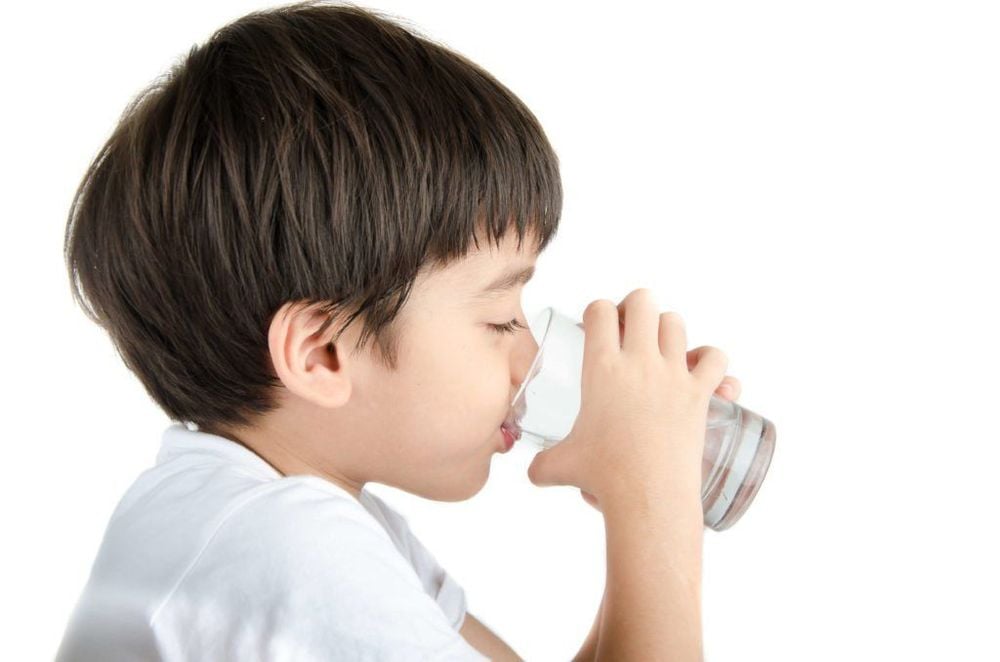
Khi trẻ bị nhiễm virus RSV, bạn nên cho trẻ uống nhiều nước
10. Prophylaxis to prevent RSV in children
These precautions can help prevent respiratory infections, including RSV. These are good practices for all families but are especially important if your child is at high risk for a more serious RSV infection.Frequent hand washing for all family members including children. Remind those who care for your child to be conscientious in doing so, too. At home, ask all visitors to wash their hands before handling the child. Avoid crowds and sick people. Clean and disinfect surfaces and objects, such as doorknobs and frequently touched toys. Keep children who may be exposed to or away from secondhand smoke and other irritating fumes. Do not share or let others share eating utensils with your child. Breastfeeding provides antibodies against infection. Starting at 6 months old, babies should get a flu shot every year in the fall or early winter. If your child has the flu and RSV, he or she may have a more severe infection. Make sure that the adults around the child are vaccinated with DTaP, to protect against whooping cough. If your child has whooping cough and RSV, he or she may have a more severe infection. If the child is at high risk. Consider arranging home care during RSV season (usually October or November through April or May, peak January and February).
11. Is RSV a serious concern for older children and adults?
RSV is not a health concern for school-age children and adults as it is for infants and young children. These subjects' immune systems were stronger and their airways larger, and were less likely to become dangerously blocked by inflammation. Most older children and adults with RSV simply have an upper respiratory tract infection characterized by a cough.Vinmec International General Hospital is one of the hospitals that not only ensures professional quality with a team of leading medical doctors, modern equipment and technology, but also stands out for its examination and consultation services. comprehensive and professional medical consultation and treatment; the most civilized, polite, safe and clean medical examination and treatment space.
If you have a need for consultation and examination at Vinmec Hospitals under the nationwide health system, please book an appointment on the website for service.
Please dial HOTLINE for more information or register for an appointment HERE. Download MyVinmec app to make appointments faster and to manage your bookings easily.
Reference source: babycenter.com




